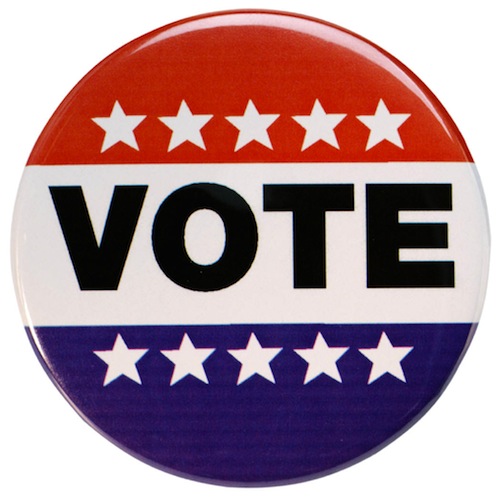This is a plan that would do it.
Councilman Ron Nirenberg [recently] called for a major change to local elections that he says would boost voter turnout and bolster public participation.
The councilman said he’s spent years considering ways to address abysmal turnout in municipal elections, which are held in May of odd-numbered years. His solution is to move local elections to November of even-numbered years, coinciding with state and federal elections. There would be either a presidential or gubernatorial race on the ballot, driving far better turnout than what municipal elections tend to garner.
“I’m alarmed and astounded by how few people have their voices heard in municipal elections,” Nirenberg said. “That should concern everyone.”
Voter turnout in the May municipal elections is starkly different from that of the November elections. In recent years, for example, the 2005 city election pulled the highest percentage of registered voters, 18 percent. That ballot included an election for an open mayoral seat, pitting Phil Hardberger against a young Julián Castro. Since then, voter turnout peaked in May with 11.89 percent. That included the mayoral race involving Mayor Ivy Taylor, Leticia Van de Putte, Mike Villarreal and Tommy Adkisson.
In the interim period, turnout dropped to a low of 6.94 percent, or about 53,000 of more than 764,500 voters.
Meanwhile, November elections in even-numbered years have drawn between 31.7 percent and almost 57 percent of registered voters since 2008.
[…]
For Nirenberg’s plan to come to fruition, a couple of things have to happen. The Legislature must amend the Local Election Code, and the City Council would have to vote to call a charter amendment election, no sooner than May 2017, wherein voters would ultimately decide whether to move city elections to November of even-numbered years.
On Monday, Nirenberg called on the city to move its elections to coincide with state and federal elections. He sent letters to the city’s Charter Review Commission and to state Rep. Lyle Larson, who he hopes will sponsor a bill that would allow such a change.
The numbers are clear, and so would be the effect. You would also likely get a younger and more diverse electorate, especially in the Presidential years. I could swear Greg looked at what the effect would be like in Houston if we did that here, but I couldn’t find it; this post about having the HERO referendum last year instead of this year touches on the theme. That effect might be lesser in San Antonio than in Houston, but it would likely still be there. For purposes of comparison, let’s take a look at city turnout in the last two even-numbered years, as there were city issues on each ballot. In 2014, there were 398,337 votes cast and 40.90% turnout in Harris County. Those numbers ought to be good enough to make even Mimi Swartz smile.
The fly in the ointment here is that many of our elections aren’t settled in November. Let’s use Austin as an example, since CM Nirenberg cited it and since they just had a contested city election there last November. The November election drew 209,140 total votes, for 40.40% turnout. But then there were the runoffs, as we have in Houston and as they would have in San Antonio, in our often multi-candidate races. The 2014 Austin runoffs attracted only 78,868 total votes, which is 15.58% turnout. Not exactly the same universe there, and for sure not exactly the same voter demographic.
Of course, you can’t have everything, and you shouldn’t let the perfect be the enemy of the good. Boosting November turnout may be reward enough, and who knows, maybe once people adjust to that then December races would be better than they have been. There’s another potential downside, however. Like Harris County, the various independent school districts and community college districts in Bexar County hold their elections at the same time as the big (and small) city races. Separating the city elections from the school and community college board elections would likely have a negative effect on their turnout. How much of an effect might that be? I don’t know, and I don’t know what the school/CC districts might think about it. One way or the other, it’s a conversation that would need to be had.
What about moving the school/CC elections to November of even years along with the city races? That’s certainly an option. The argument that I have always heard for keeping school board elections in odd numbered years is that it keeps from from being too politicized, as they would maintain some distance from the even-year partisan races. For that reason, back in the days of House Speaker Tom Craddick, there was a move afoot by some nefarious characters to force school board elections to November of even years, the thinking being that making such elections more partisan would benefit Republicans. That effort went nowhere, and I don’t know that the old thinking still applies. For better or worse, all elections are more partisan now, and higher turnout is generally seen as benefiting Democrats. The politics of this in the Legislature, if Nirenberg’s proposal makes it that far, ought to be fascinating. The Current and the Rivard Report have more.


What Happens to City Elections in Even-Numbered Years?
Add instant runoff voting to the mix. It keeps me from having to return to the voting booth, and saves money for the county by not having two elections.
Bill,
I agree.
We need IRV
Yes for IRV, and eventually online registration along with an app which will send automatic notifications to vote along with polling place info and sample ballots. Dare we hope for online voting? The re-scheduling ideas discussed in this post may help, but I wonder if that’s enough to counteract the apathy/antipathy associated with politics and elections. The down-and-dirty HERO campaign may be turning off as many potential voters as it’s firing up. Is there any way to measure that if it’s happening?